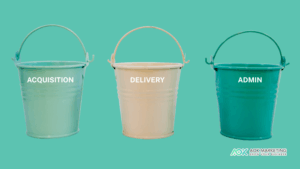What Kinds of Businesses Fit Performance‑Based Marketing?
Quick Recap: Which businesses thrive with performance marketing?
- Ecommerce: Clear sale events support pay‑per‑sale models.
- Lead generation: You only pay for qualified prospects.
- Both: Requires defined conversion, accurate tracking, and margin room.
- Core requirements: Conversion clarity, financial metrics, aligned partners, and pilot testing.
What business models suit performance‑based marketing?
Performance‑based marketing works for ecommerce and lead generation businesses.
Ecommerce fits when products are sold online with measurable transactions.
Lead generation fits when clients pay only for qualified engagements like demo requests.
Some businesses combine both models in parallel funnels.
All models require defined conversion events, accurate tracking, and healthy profit margins.
Why does ecommerce fit performance‑based marketing?
Ecommerce sales are trackable through analytics platforms like Google Analytics or Shopify.
Ad clicks often lead to purchases within hours or days.
Retailers can scale ad budgets based on reliable return‑on‑ad‑spend data.
Ron White Shoes spent $15,000 on ads and generated $322,900 in sales—a 21.5× ROAS—using AOKMarketing’s performance‑based PPC model.
This model reduced risk because payment was tied directly to recorded sales.
Ecommerce businesses often see fast campaign feedback and can iterate quickly.
Why does lead generation work with performance‑based marketing?
Lead generation campaigns bill only for qualified actions like form completions or demo sign‑ups.
Businesses only pay for leads that meet predefined criteria.
DND Finance launched a credit card in the UK and hit a $1.60 cost‑per‑acquisition by targeting niche audiences.
PacketLabs, a cybersecurity firm, accepted a $5,500 CPA because their average client value was $57,000.
High-ticket businesses benefit because each qualified lead justifies the cost.
Lead generation models can optimize campaigns based on lead-to-deal conversion rates.
Can businesses use both ecommerce and lead‑generation models?
Yes. Some companies use dual funnels—one for direct online sales and another for service inquiries.
These campaigns can run simultaneously with separate tracking and billing.
Integrated systems link ad spend to both sales and qualified leads.
Performance‑based contracts can specify separate metrics and payouts for each funnel.
This blended model suits businesses that sell both products and services.
What do you need to run performance‑based marketing?
- Define conversion: Identify what triggers payment—sale, lead, or booking.
- Know your numbers: Calculate average order value, lifetime value, and margins.
- Align with a partner: Choose agencies or platforms that earn only when you do.
- Test before scaling: Validate with pilots, optimize, then expand budgets.
- Track accurately: Use UTM tags, conversion pixels, and CRM integration.
- Ensure high performance: Landing pages and ads must meet conversion benchmarks.
What are the pros and cons of performance‑based marketing?
| Model | Pros | Cons |
|---|---|---|
| Ecommerce | Low risk, data-driven scale | Requires precise tracking and sufficient margin |
| Lead generation | Pay only for qualified prospects | Needs careful lead validation and longer sales cycles |
| Both | Budget allocation by result type | Complex tracking and dual funnel setup |
Frequently Asked Questions
Can I use performance-based marketing without accurate tracking?
No. Accurate tracking is essential. The performance model needs clear conversion events before billing can occur.
Is performance‑based marketing more expensive?
Costs depend on your margins and conversion value. Properly structured, it can be more predictable and cost‑effective.
Who should run performance‑based campaigns?
Businesses with clear conversion events and profit margins. Ecommerce stores and lead‑generation firms are ideal.
Glossary
- Performance‑Based Marketing
- Marketing model where payment occurs only after a sale or qualified action.
- Return on Ad Spend (ROAS)
- Revenue generated for each dollar spent on ads.
- Cost per Acquisition (CPA)
- Average cost to acquire a sale or lead.
- Conversion Funnel
- Process from first interaction to final purchase or lead submission.
About The Author
Dave Burnett
I help people make more money online.
Over the years I’ve had lots of fun working with thousands of brands and helping them distribute millions of promotional products and implement multinational rewards and incentive programs.
Now I’m helping great marketers turn their products and services into sustainable online businesses.
How can I help you?





